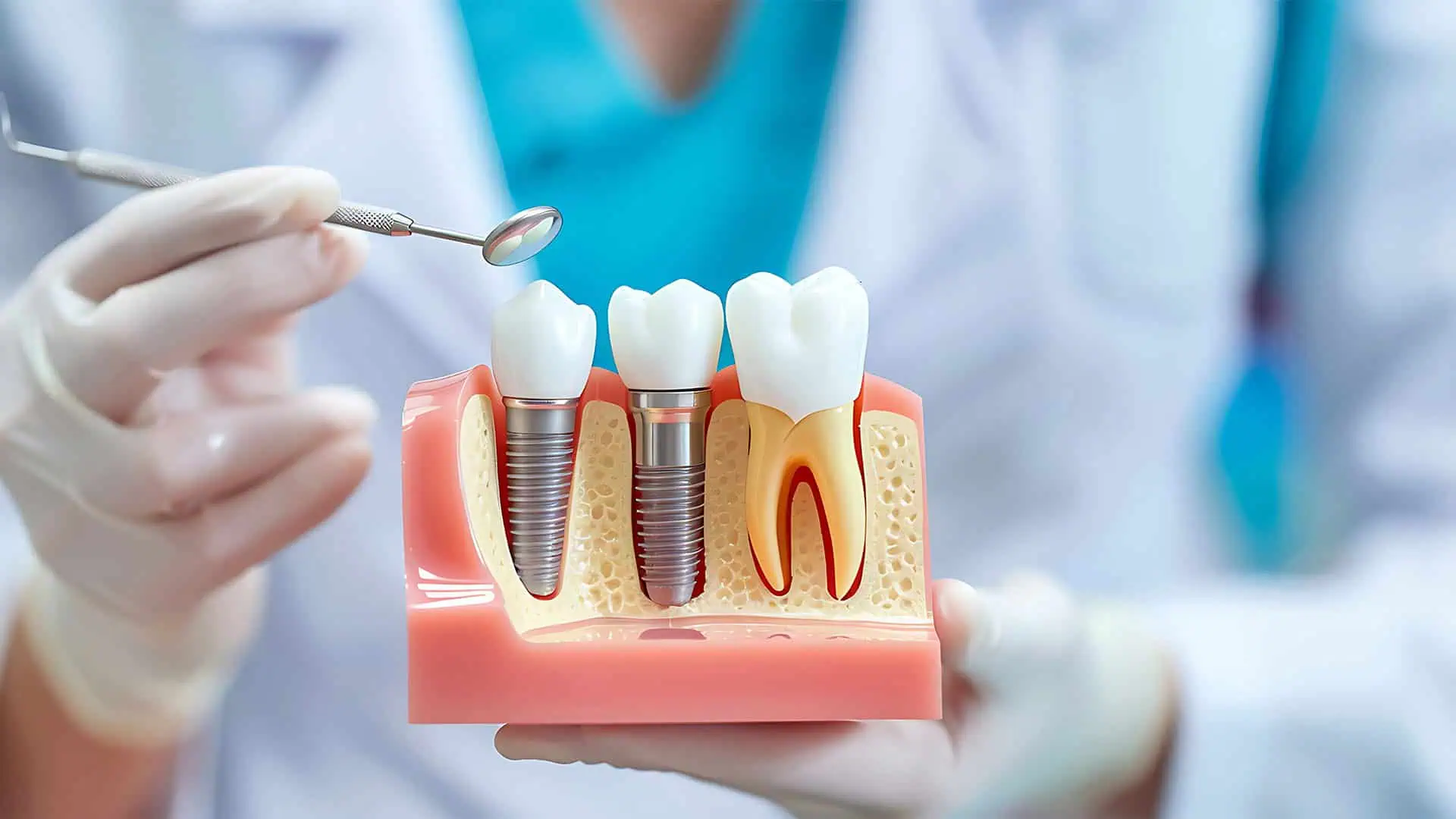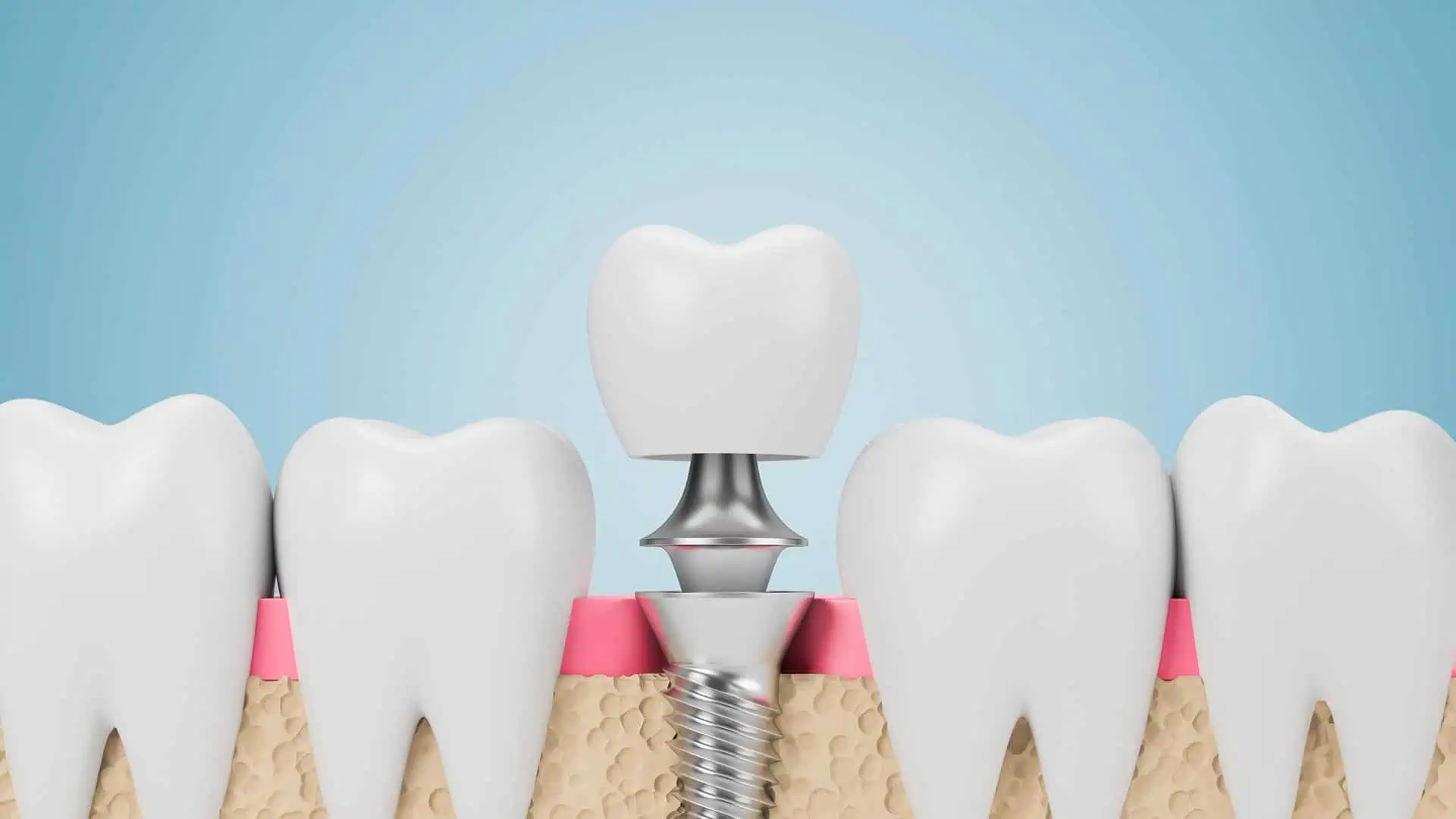Understanding Dental Implants: What They Are and How They Work
July 12, 2024

While some might be familiar with the term “dental implant” as a popular tooth replacement option, many have little to no knowledge about the specifics of this dental procedure that can address tooth loss. In the following article, I, Dr. Nabil Mockbil will guide you through the basics of this surgical procedure, covering what is a dental implant, how can this dental restoration become a solution for tooth loss, when it is suitable, and how to take care of a new implant to ensure a long-lasting, healthy, and natural-looking smile.
Before we dive into the matter, I would like first to introduce myself a bit more. My name is Dr. Nabil Mockbil and I’m a specialist orthodontist in addition to a general dentist at Sweedish Dental Clinic in Dubai. I have more than twenty years of combined experience that allows me to provide extensive care to all my patients whatever their conditions are. Through my strong belief in continuous learning, I and my team of dental professionals are always eager to embrace the latest advancements in dental technology to facilitate the process and guarantee the best natural-looking results. So without further ado, let’s explore the world of tooth implants and discover how they can transform your smile.
What Is A Dental Implant?

Implants are basically artificial tooth roots that get fused into the jawbone offering both a durable and natural-looking solution for any missing tooth. These artificial roots are surgically placed into the patient’s gum tissue, where they merge seamlessly with the jawbone over time. During the healing period, which typically takes anywhere from 3 to 6 months, a fusing process called “osseointegration” happens. A few factors can affect the length of the period such as how dense the jaw bone is and whether the patient has any bone disorders or infections like periodontal disease. Once the implants are secured in place, they can start supporting a dental crown, a bridge, or even a full denture, restoring both the esthetics and functions of natural teeth.
Dental implants are made from biocompatible materials, such as biocompatible titanium. Titanium is a highly durable, and lightweight material that forms a strong and stable bond with the jawbone. These features allow implants to provide a stable foundation for restoring oral functionality to patients, in addition to providing them with a permanent and natural-looking replacement for their real teeth.
The History and Evolution of Implants
After we have gained an understanding of what is a dental implant, let’s delve deeper into the origins of this dental treatment. Some say that the method traces back to approximately 4000 years ago when bamboo pegs were used as false teeth in China. However, many scientists argue that these were attempts to fill a single tooth gap after the person had died. The first successful attempt to replace a missing tooth for a living patient occurred in the late 1900s. Following Dr. Per-Ingvar Branemark’s discovery of osseointegration in 1952, he conducted extensive research and was able to perform the first operation in 1965, where the titanium implant took 6 months to fuse successfully and lasted an impressive 40 years. This remarkable discovery paved the way for the development of many other modern techniques.
The Main Types of Implants
Now that we know what is a dental implant in addition to its origin, let’s become more familiar with the main types of implants. During a dental implant surgery, the doctor will mostly opt for one of the following types. The main differences between these three types are the shape of the implant and its placement.
1- Endosteal implants are the most famous and most used type of implants. These titanium screws are used for most of the common cases that do not require any special types of dental implants.
2- Subperiosteal implants on the other hand rest on top of the jawbone rather than being inserted within. This makes them a better option for patients with insufficient bone density.
3- Zygomatic implants provide a superior alternative to traditional implants in cases of inadequate jawbone. This type of implant gets anchored directly onto the cheekbone, making it ideal for patients with severe bone loss in the upper jaw.
To conclude the matter, it is important to understand that there is no one ultimate solution. Each one of the three types can be ideal and offer the most effective solution according to the needs. So it is not an option for patients to choose from rather an oral surgeon’s opinion that takes into consideration the patient’s medical condition in addition to eliminating any potential risks and providing a permanent solution for their exact requirements.
Dental Implant Procedures

A dental implant surgery is a multi-step process with a few main points. In the following section, we’ll highlight the main dental implant procedures that a specialist takes during the placement of endosteal implants.
First, the patient visits the dental clinic and consults with the dental team while they start performing an examination and assessment. During this, the dental professionals examine and evaluate the specific requirements for the case and decide on the ideal approach to deal with it. This includes selecting the type of implants according to their gum health conditions and the specificities of their jaw bone.
After the dental exam and preparation procedures are done, pre-operative procedures can be taken. In case the patient has insufficient natural bone or suffers from bone loss, the oral surgeon might suggest a bone graft process or sinus lift. This provides a bone substitute for the implant to be attached to. Other patients with healthy jawbones can skip this step and move to the implant phase.
After all the previous preparations, the dental implant process can begin. This process starts with anesthesia in the gum tissue before the surgeon makes the incision to expose the jawbone. Using special drills, the surgeon prepares the bone to receive the implant and then places the implant carefully in the prepared bone site. When the implant is securely placed, the surgeon stitches the gum tissue back and closes the made incision.
Taking Proper Care of New Implants
Post-operative care is essential to guarantee long-term success. The doctor’s treatment plan must be followed to ensure the replacement teeth remain in their best condition as long as possible. Instructions might differ from one patient to another according to the specifics of their case but in general, these four tips are the most common for taking proper care of new implants:
1- Oral hygiene:
Maintaining a consistent oral hygiene routine is crucial for optimal oral health. Brushing teeth gently and regularly must be your habit. Initially, the patient must avoid the implant area to achieve a fast healing process. Good oral care lowers the chance for any risks of infection in addition to preserving natural teeth.
2- Maintaining a Diet:
During the first few days, the patient needs to avoid any hard, sticky, or crunchy foods. They must rely on soft foods and drinks to give their new custom-made artificial teeth the time to fuse and heal. The doctor will provide instructions on how to deal with the matter and gradually introduce firmer foods to the new implants.
3- Avoiding Cigarettes and Alcohol:
Regardless of how harmful these habits are to your body, they inflict major damage to oral health, increasing the risk of complications. Avoiding them will not only ensure fast healing but also decrease the risk of developing oral infections and preserve regular teeth.
4- Regular dental check-ups:
Maintaining regular check-ups with the dentist is the key to preserving the new prosthetic teeth and extending their life.
Paying close attention to these important oral hygiene habits ensures a fast healing process and eliminates any potential risks. Follow-up visits are no less important to the patient as the doctor makes sure everything is going according to the plan during these visits.
Importance of Dental Implants in Modern Dentistry

In modern dentistry, the importance of the implant technique goes far beyond filling a missing tooth’s place. As a matter of fact, implants can be a suitable dental procedure for a few cases other than having a missing tooth. Such instances could include replacing more than one lost tooth or even installing a full arch of teeth on a few implants. So not only do crowns benefit from this dental surgical procedure, but so do bridges and dentures. In some cases, the experienced dentist may not be able to rely on adjacent teeth to install a bridge, so implants come into play.
An example of one of the most successful methods for replacing a full set of teeth with implant-supported fake teeth is an “All-on-Four”. In this technique, we strategically place 4 titanium posts within the patient’s mouth and then fix a full denture for both the upper and lower set of teeth. By using this method, the patient gets rid of the hassle of removable dentures. Having a fixed set of dentures significantly improves functionality and preserves jawbone density by stimulating bone growth around the implants.
The Long-term Benefits of Dental Implants
The dental implant procedure has numerous benefits that can be summarized in the few following points:
1- Enhanced Appearance and Self-Esteem
A missing tooth can greatly impact one’s self-esteem, negatively affecting the way they think they are seen. Implants are an excellent solution that could regain and boost the patient’s confidence by recovering their gorgeous natural-looking smile.
2- A Long-lasting Solution
Besides making a lasting impression, tooth implant surgery gives the patient a long-term solution for lost teeth. Dental implants are designed and manufactured to last a lifetime, of course, taking into consideration good oral hygiene and regular dental check-ups.
3- Improved Oral Health and Functionality
In addition to giving the patient their beautiful smile back, implants also boost their oral hygiene and stop any lingual difficulties they might have. Since implants completely replace the tooth, no part of the old, damaged tooth remains in the mouth, eliminating the risk of experiencing further oral cavity issues.

Dr. Nabil Mockbil, DDS, BDS
Dr. Nabil Mockbil is the head of Swedish Dental Clinic and one of the most experienced orthodontists in Dubai. By demonstrating incredible skills and embracing a kind attitude, he's proven to be not just a brilliant dentist, but someone you can fully trust with your smile. With 20+ years of experience under his belt and a warm smile on his face, you're search for the best orthodontist in Dubai ends with him.




